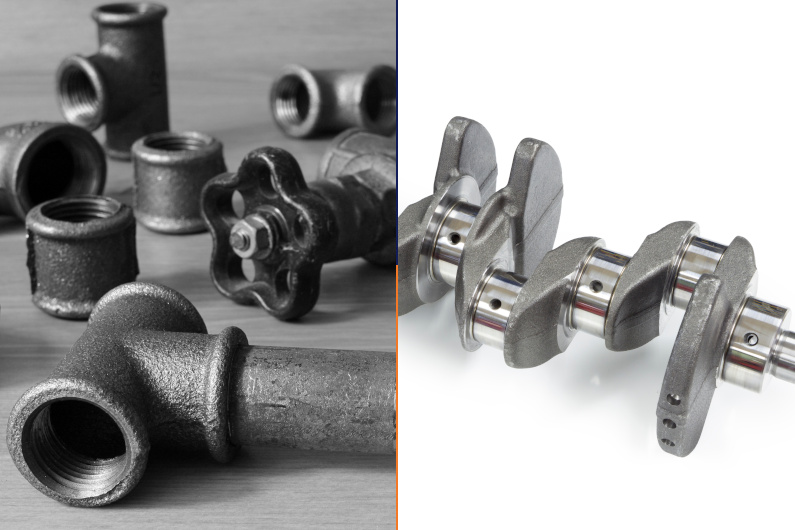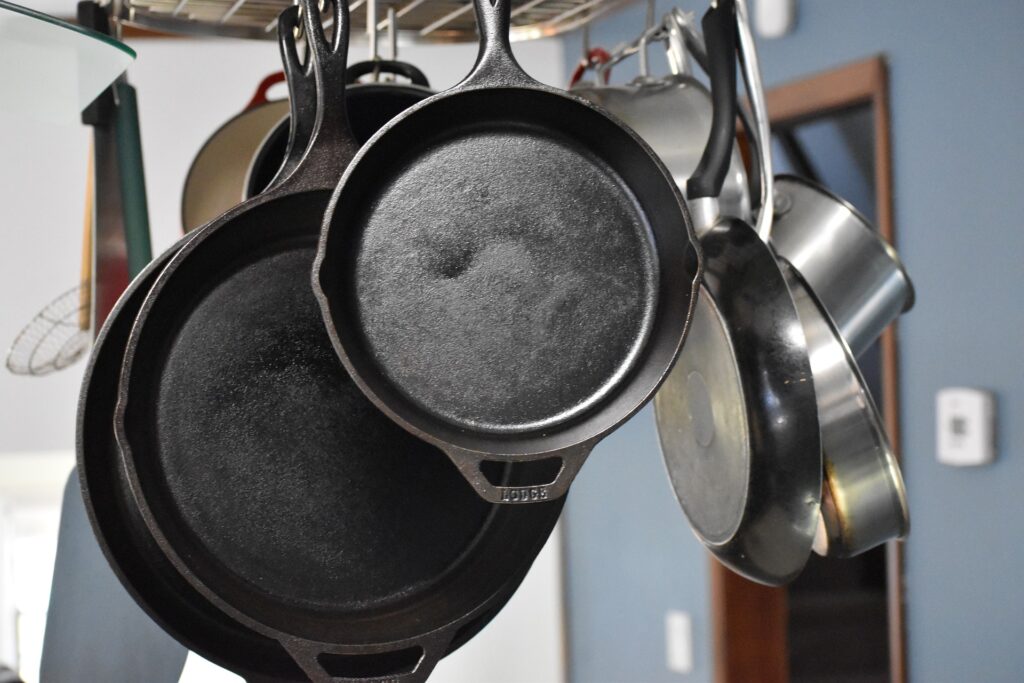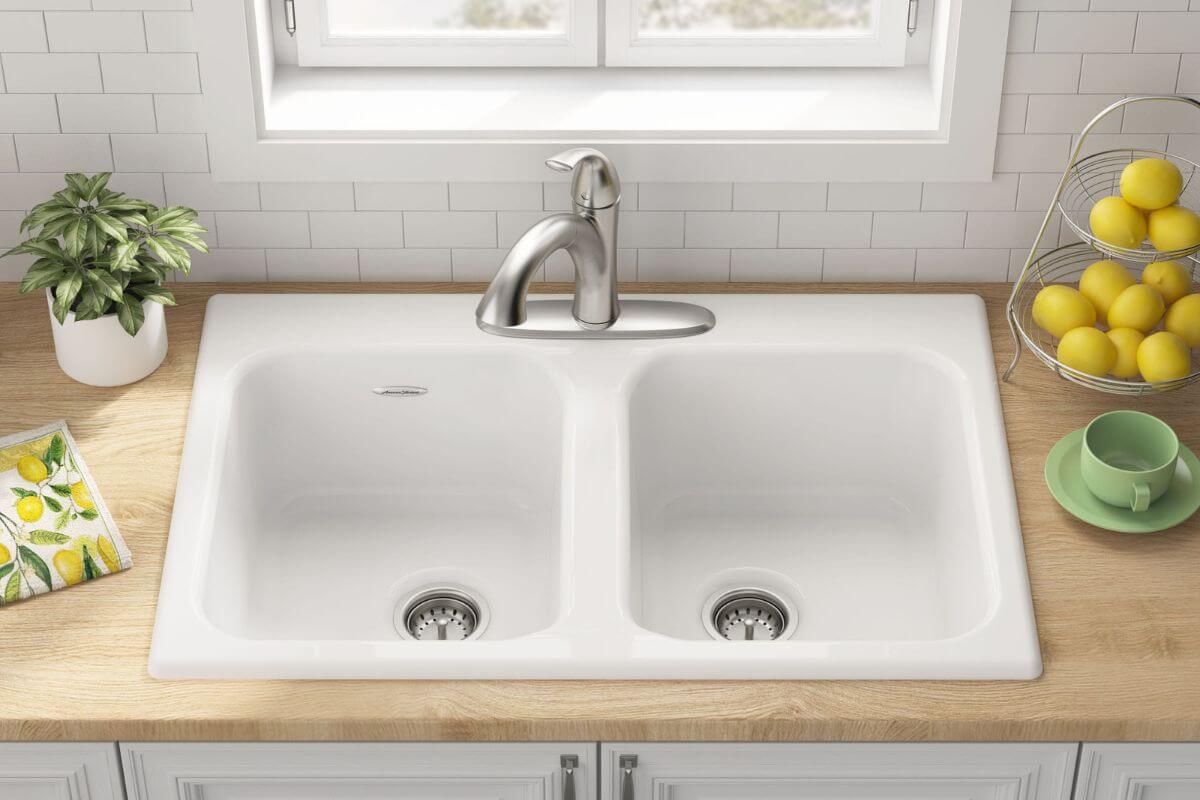Cast Iron Vs Carbon Steel Vs Stainless Steel Which Skillet Should You

does enameled cast iron work on induction Sharply Blawker Bildergallerie
Popular in commercial kitchens, stainless steel cookware is fast, low-maintenance, and usually lighter than cast iron. Stainless steel pans, especially the ones with a copper core, can heat up quickly and evenly, as well as perform various cooking tasks such as searing delicate meats and sautéing. While some novice home chefs may be worried.

Cast Iron vs. Steel What Are Their Advantages and Disadvantages
Cast iron is known to shine while searing meat at high temps and transitioning seamlessly from stovetop to oven, while stainless steel is known for its versatility and easy maneuverability. For a team of tools that can do it all, pair cast iron and stainless steel together.

Difference Between Mild Steel Vs CastIron Vs Wrought Iron PDF Cast
1 Answer. Enameled cast iron usually means porcelain enamel, a type of glass. It's resistant to both acidic and alkaline foods. It is fine to cook and even store tomato sauces, etc. in enameled cast iron. Stainless steel is also resistant to acidic foods, but not as much as porcelain enamel. Storing tomato sauce in it may eventually discolor.

Cast Iron Vs Enameled Cast Iron Complete Guide Because Food Is Life
Durability. Enameled cast iron is renowned for its unmatched durability. Its thick, sturdy construction can withstand years of heavy use and is virtually indestructible. Stainless steel, while durable, is more susceptible to scratches and dents than enameled cast iron. However, with proper care and maintenance, it can last for many years.

Cast Iron Vs Carbon Steel Vs Stainless Steel Which Skillet Should You
Enameled cast iron enhances the flavor of any dish beautifully, as it excels at slow cooking, roasting, stewing, braising, and baking. It locks in the moisture for a succulent baked chicken or produces a perfectly risen sourdough. Stainless steel cookware excels in all other areas: searing, sautéing, frying, boiling, steaming and simmering.

Cast Iron vs Enameled Cast Iron Which is Better For You? YouTube
I replicated the same test with stainless steel and hard-anodized aluminum pots to compare the heat retention of enameled cast iron cookware vs. other cookware types. Water in the All-Clad stainless steel pot after 10 minutes was 113.7°F and 94.4°F after 20 minutes.

Cast Iron Vs. Steel The Comparison Machiningtoday
Difference 4: Durability. Since enamel coating is more susceptible to damage than raw metal, bare cast iron cookware is the more durable option. Enameled cast iron can chip and scratch during use and storage, which reduces its overall lifespan. Scratches on enameled cast iron cookware.

Porcelain Coated Cast Iron VS Stainless Steel Grill Homegets Your
Conclusion. Stainless steel and enameled cast iron each have their own set of advantages and considerations. Stainless steel offers durability, versatility, and ease of maintenance, while enameled cast iron provides superior heat retention and a charming aesthetic. Consider your cooking style, budget, and personal preferences when deciding.

The 5 Best Cast Iron Pans (Raw vs. Enameled Cast Iron) Hungry Hobby
Features. Enameled cast iron cookware has a rugged look yet is visually appealing due to its aesthetic enamel coating. It is often weighty as they come thick. Stainless steel is a sleek, shiny cookware. It is lighter than enameled cast iron in terms of weight, but it tends to be more durable.

Carbon Steel vs Stainless Steel Metal Pie
4. Key Differences Between Enameled Cast Iron Cookware vs. Regular Cast Iron Cookware. Frying Pan & Skillet 9" | Avalon Series Before we dive into the nitty-gritty of why a stainless steel pan is a much better purchase than an enameled pan, let's talk about the key differences between enameled cast iron cookware and regular cast iron cookware that you find in most kitchens.

Cast Iron Vs Stainless Steel
Enameled cast iron can have it's coating shattered if you use too high of heat and metal utensils aren't recommended. Stainless steels works for me 90% of the time. If I have to cook potatoes or eggs though, I use cast iron. Even then, with enough oil, I've made decent enough eggs in stainless. 3.

Cast Iron Vs. Enameled Cast Iron
The big difference is that stainless steel has less than 2% iron. At least 10.5% chromium (and oftentimes some other elements) is added to regular steel to produce a stainless steel that's resistant to corrosion and rust, non-reactive (able to be used with almost any ingredient), and extremely durable. Most stainless steel cookware, however.

Material Matters Sterling Silver vs Stainless Steel
They clean differently: stainless is initially a little harder to clean, but polishes with use making cleaning easier. Food initially sticks less to enamel, but scratches and cracks change this. using steel wool to clean stainless improves the finish, using it to clean enamel scratches the finish.

Cast Iron Vs Cast Steel Differences Explained Mellowpine My XXX Hot Girl
Cast iron pans are often more affordable than high-quality stainless steel pans. Basic cast iron pans, such as those without enamel coating, can be quite inexpensive, making them a budget-friendly option for consumers. Additionally, cast iron pans are known for their durability, so they offer good value for the price.

Cast Iron Sink vs. Stainless Steel Choosing the Ideal Sink for Your
Enameled cast iron cookware tends to be pricier compared to stainless steel. This is mainly due to the additional cost of the enamel coating and the intricate manufacturing process. A high-quality enameled cast iron pot or pan can range anywhere from $100 to $500, depending on the brand and size.

Enameled Cast Iron vs. Cast Iron [Important Pros & Cons]
Cast iron itself isn't heavier than steel, but cast iron cookware is made with thick walls to improve durability. Stainless steel has greater ductility than cast iron, so it doesn't require such thick walls. Thus, stainless steel cookware is much lighter. Since stainless steel is lighter, it is easier to manipulate.